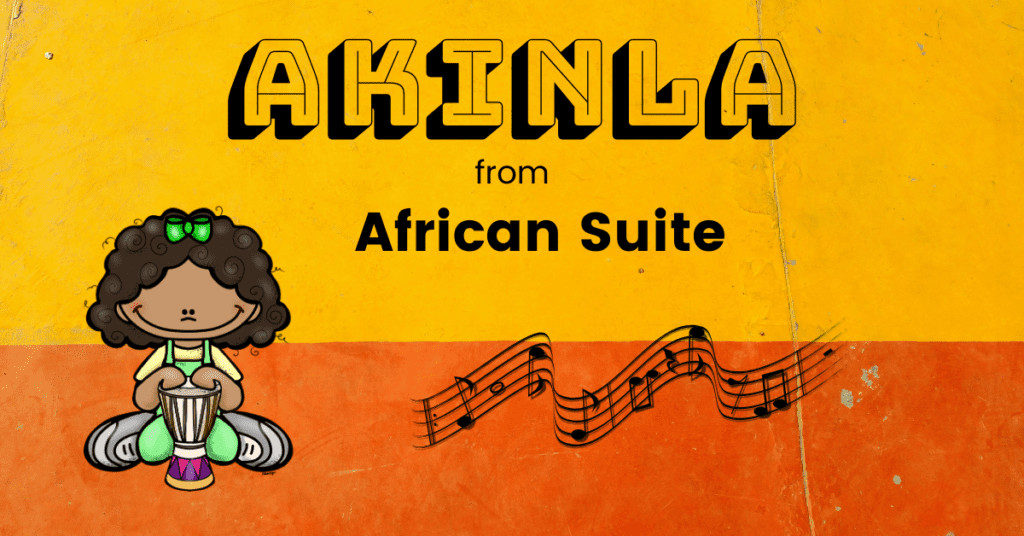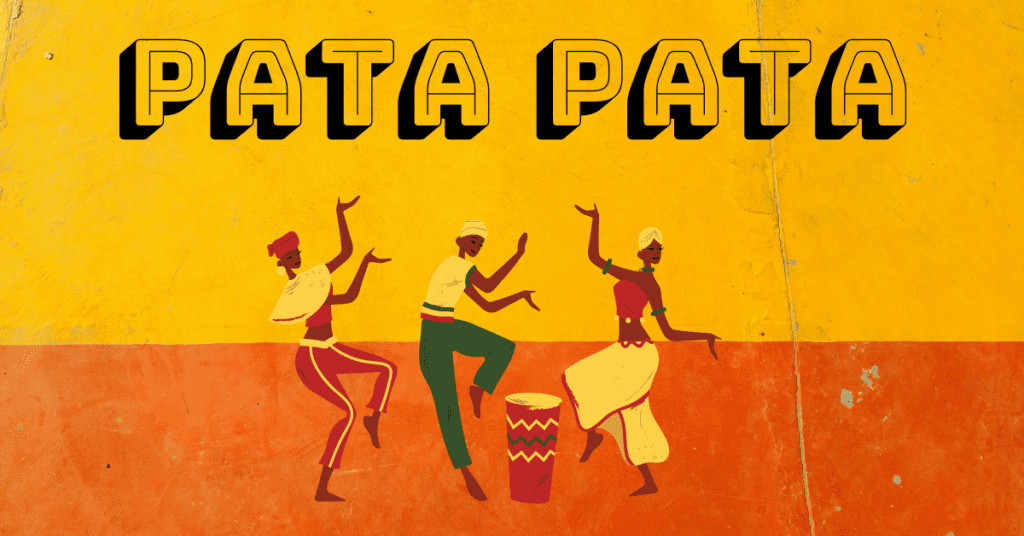Bringing diverse musical experiences into the classroom is crucial, and exploring African Songs offers a vibrant and enriching journey for students. From energetic rhythms to captivating melodies, African music provides a fantastic avenue to learn about different cultures and musical traditions. Today, we’ll explore two captivating African songs perfect for engaging your students in musical activities and cultural appreciation.
 rhythm reading activity elementary music Akinla from African Suite Chief Fela Sowande
rhythm reading activity elementary music Akinla from African Suite Chief Fela Sowande
“Akinla” from African Suite – A Nigerian Musical Journey
“Akinla,” composed by the renowned Nigerian composer Chief Fela Sowande, is a remarkable piece that beautifully blends African folk song elements with orchestral arrangements. Sowande’s work is often compared to that of Aaron Copland, as both composers masterfully incorporated traditional folk melodies into their compositions, creating a unique national musical identity. “Akinla,” meaning “brave warrior” in Yoruba, showcases the rich musical heritage of Nigeria.
Rhythmic Exploration: 8-Beat Ostinato Activity
This song provides an excellent opportunity to introduce students to the concept of ostinato – a repeating musical phrase. While pre-made ostinato materials may exist in some curricula, creating your own is a rewarding and adaptable exercise. A simple yet effective approach is to design two 8-beat rhythmic patterns. Performing the first pattern twice, followed by two repetitions of the second pattern, generally aligns well with the melodic structure of “Akinla.” It’s important to note that the ostinato is primarily played during the main melody sections, pausing during instrumental interludes. This activity helps develop students’ rhythmic reading and ensemble skills.
Instrumental Enrichment: Adding African-Inspired Instruments
To further enhance the African feel of “Akinla,” incorporate instruments that resonate with African musical traditions. This is an ideal moment to introduce students to indigenous African instruments and their cultural significance. While authentic instruments are fantastic, classroom substitutes like tubanos (or hand drums) and maracas (or shakers) work wonderfully. Assign half notes to shakers and quarter notes to tubanos, then encourage students to switch parts, allowing everyone to experience different rhythmic layers. This hands-on activity deepens their understanding of rhythm and texture in African music.
Creative Expression: Student-Generated Rhythmic Ostinatos
For a more advanced engagement with “Akinla,” challenge students to create their own rhythmic ostinatos. Considering the song’s tempo, it’s advisable to focus on rhythms primarily using half and quarter notes. However, incorporating a few faster rhythms can add an exciting layer of complexity, but be prepared for a lively and energetic session! Once new ostinatos are created, students can further explore their creativity by devising body percussion movements to accompany their rhythmic patterns. This activity fosters creativity, collaboration, and a deeper connection with the African song.
 elementary music dance movement activity Pata Pata
elementary music dance movement activity Pata Pata
“Pata Pata” – South African Pop Sensation
“Pata Pata,” meaning “Touch Touch” in Xhosa, is a globally recognized and infectiously joyful African pop song from South Africa, famously performed by the iconic Miriam Makeba. This song isn’t just music; it’s a cultural phenomenon that embodies the spirit of South African music and dance. Known for its catchy melody and upbeat tempo, “Pata Pata” is inherently engaging for students of all ages.
Get Moving: The “Pata Pata” Dance
While “Pata Pata” is musically rich, its accompanying line dance is a major highlight, especially for older students. This dance is a fantastic way to get students active and moving while experiencing African culture in a physical way. Currently, the dance aspect is often the primary focus in classrooms, and for good reason – it’s incredibly fun and energetic! Numerous online resources, like YouTube videos showcasing basic versions of the dance, can easily guide you and your students.
Musical Extensions: Orff Arrangements and Beyond
Beyond the dance, “Pata Pata” offers rich possibilities for further musical exploration. The song’s repetitive bass line is perfect for creating engaging Orff or boomwhacker arrangements. Imagine the dynamic textures and harmonies that could emerge from a classroom ensemble performing their own rendition of “Pata Pata”! For ambitious classes, transforming “Pata Pata” into a full performance piece could be an incredibly rewarding and culturally enriching project. This encourages deeper musical engagement and creative arrangement skills inspired by African musical styles.
Expanding Your Global Music Repertoire
Incorporating African songs like “Akinla” and “Pata Pata” into your music curriculum not only introduces students to diverse musical styles but also fosters cultural understanding and appreciation. Exploring African music opens up a world of rhythmic complexity, melodic beauty, and rich cultural narratives. To further expand your repertoire of global music, consider exploring resources dedicated to world music education and discovering more captivating songs from Africa and beyond.

